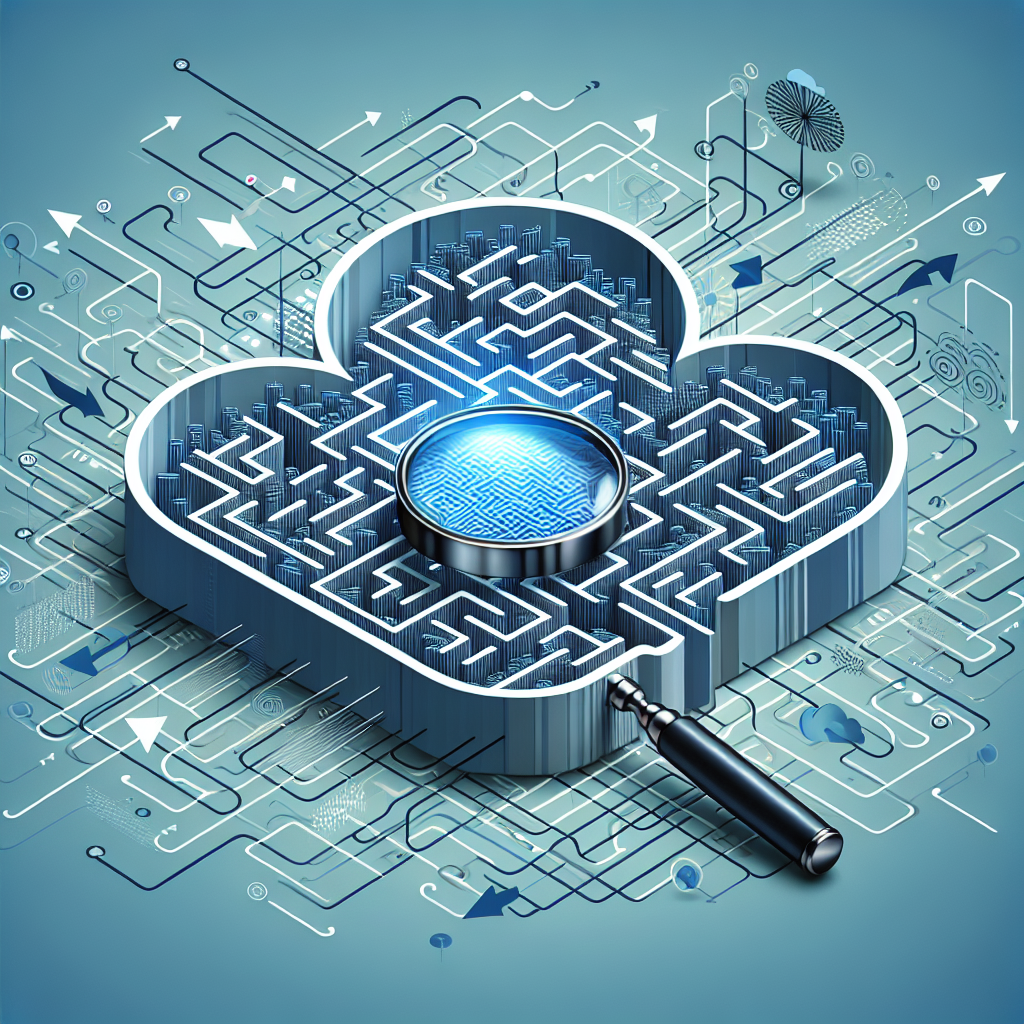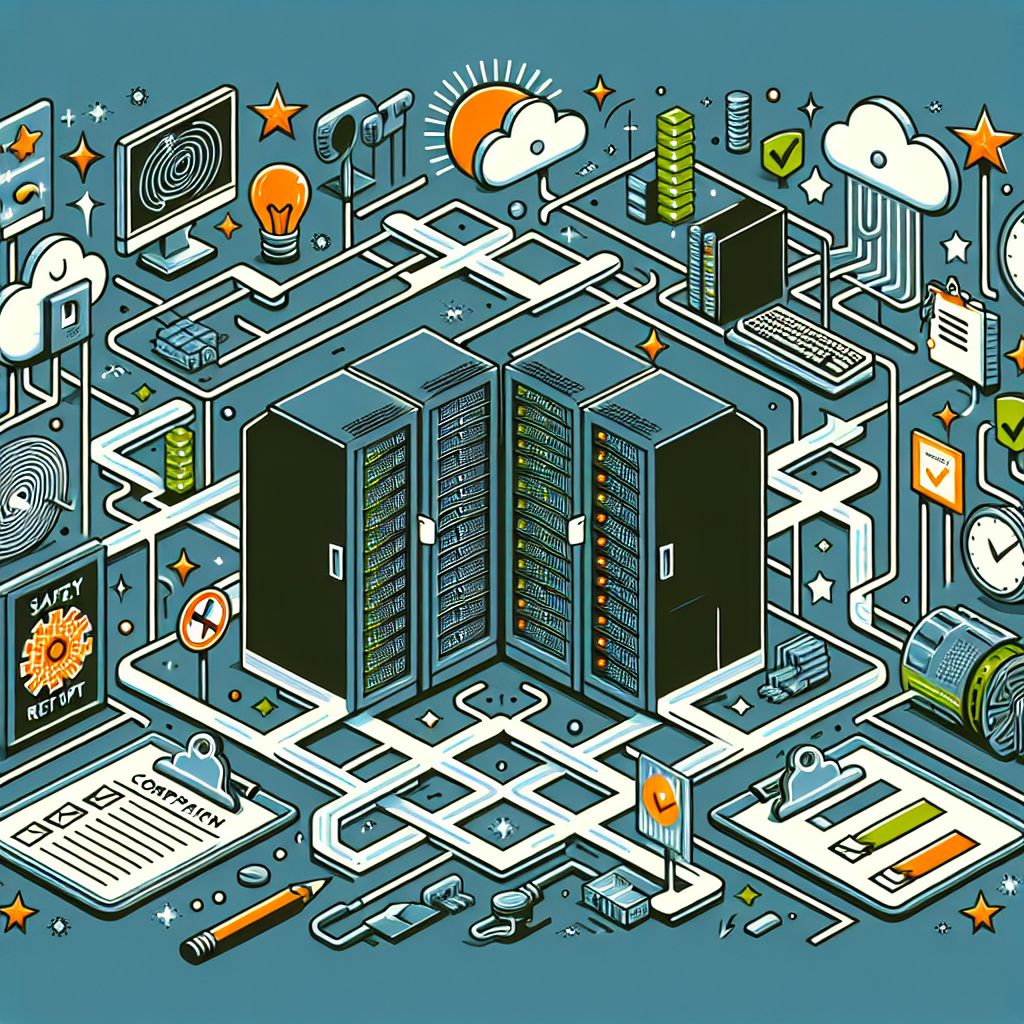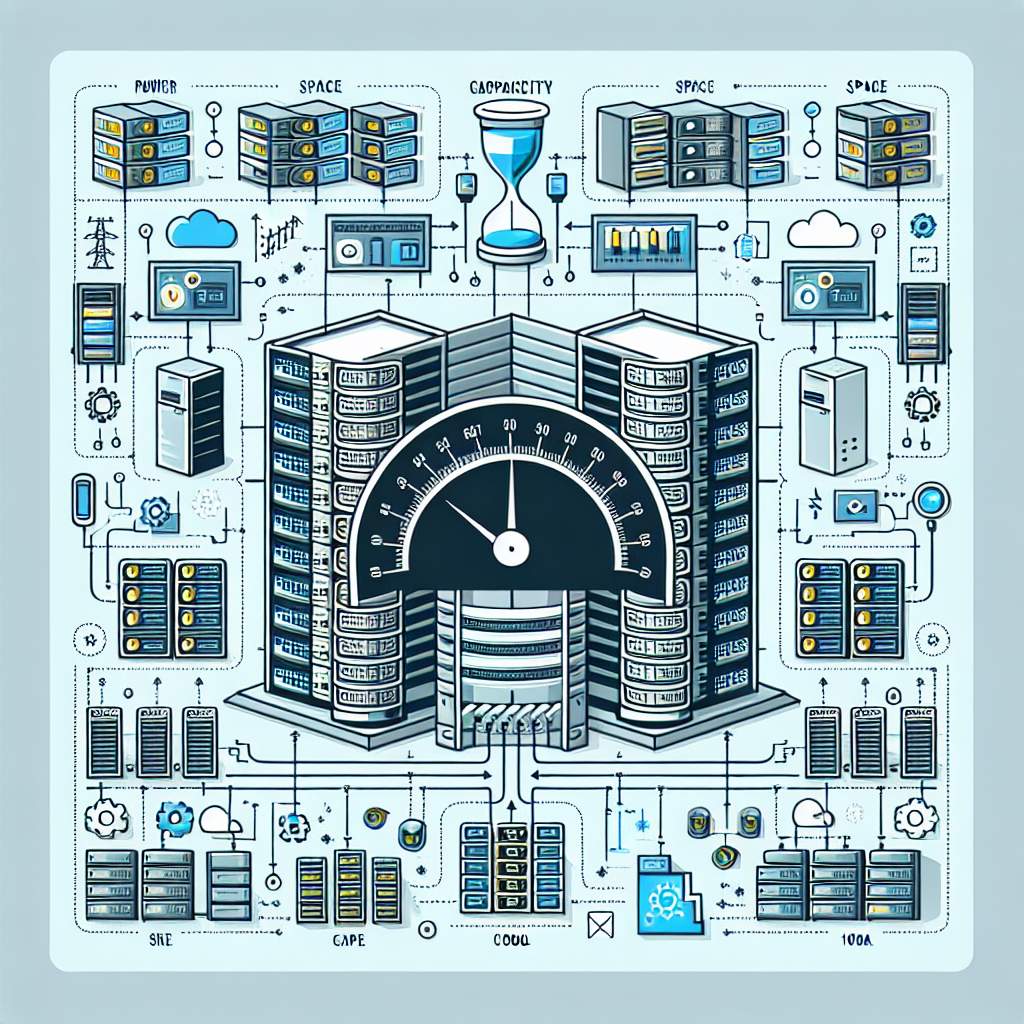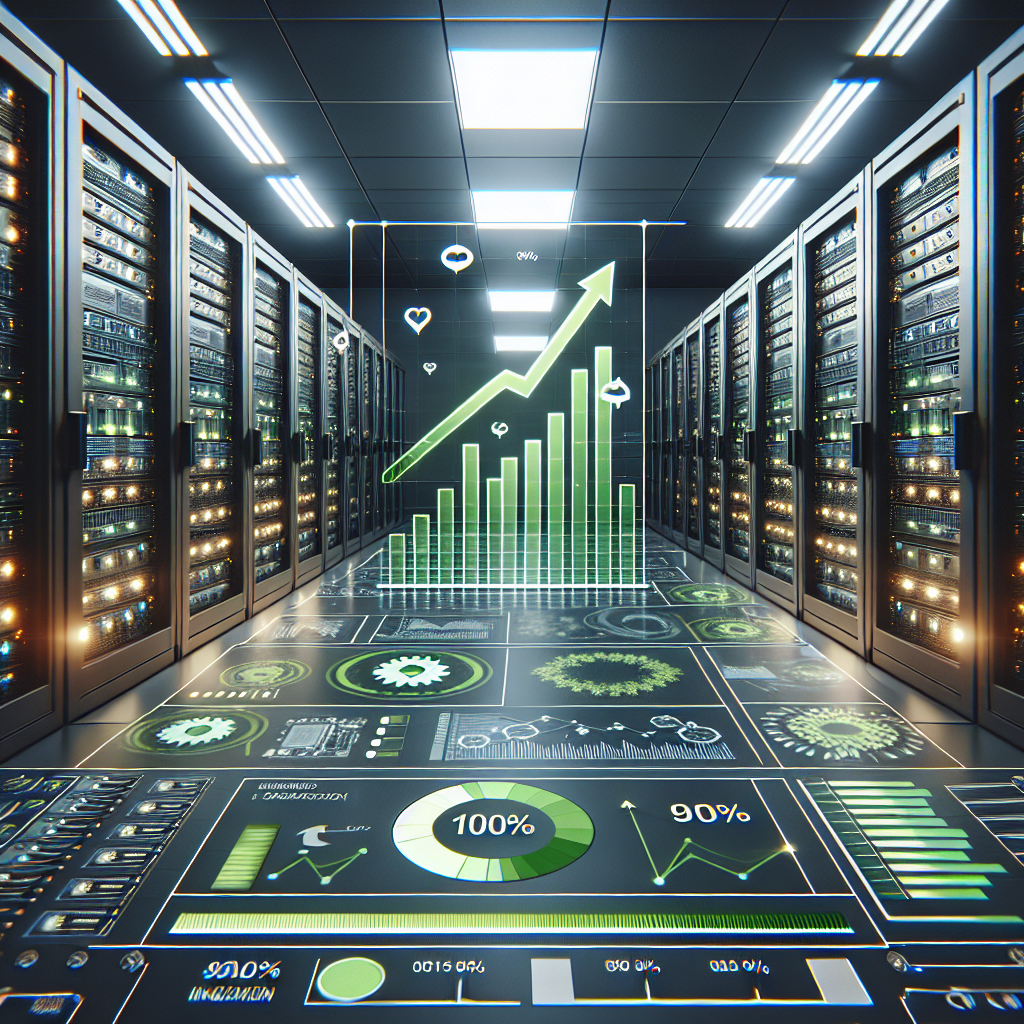Your cart is currently empty!
Tag: Data Center Service Level Agreements (SLAs)

The Importance of Change Management in Data Centers: A Comprehensive Guide
Data centers are the backbone of any organization’s IT infrastructure, housing and managing critical data and applications that are essential for business operations. As technology continues to evolve at a rapid pace, data centers must also adapt to keep up with the changing demands of the digital landscape. This is where change management comes in.Change management is a systematic approach to dealing with the transition or transformation of an organization’s processes, technology, or services. In the context of data centers, change management is crucial for ensuring that any changes made to the infrastructure are implemented smoothly and efficiently, with minimal disruption to operations.
There are several key reasons why change management is important in data centers:
1. Minimizing downtime: Any changes made to the data center, whether it’s upgrading hardware, installing new software, or reconfiguring networks, have the potential to disrupt operations and cause downtime. Change management helps to minimize this risk by carefully planning and coordinating changes to ensure that they are implemented in a controlled and organized manner.
2. Preventing errors: Data centers are complex environments with numerous interconnected systems and components. Without proper change management processes in place, there is a greater risk of errors occurring during changes, which can lead to data loss, security breaches, and other serious consequences. Change management helps to mitigate this risk by providing a structured framework for reviewing, testing, and validating changes before they are implemented.
3. Ensuring compliance: Data centers are subject to various regulatory requirements and industry standards, such as GDPR, HIPAA, and PCI DSS. Change management plays a crucial role in ensuring that changes made to the data center comply with these standards and regulations, reducing the risk of non-compliance and potential legal consequences.
4. Enhancing security: Cybersecurity threats are a constant concern for data centers, as they are a prime target for hackers seeking to steal sensitive data or disrupt operations. Change management helps to enhance security by implementing best practices for managing changes, such as access controls, encryption, and monitoring, to prevent unauthorized access and protect against cyber threats.
5. Improving efficiency: By having a structured approach to managing changes, data centers can improve operational efficiency and reduce the time and resources required to implement changes. Change management helps to streamline processes, eliminate redundancies, and optimize workflows, leading to a more agile and responsive data center environment.
In conclusion, change management is a critical component of effective data center management, helping organizations to adapt to the evolving technology landscape while minimizing risks and maximizing efficiency. By implementing robust change management processes, data centers can ensure that changes are implemented smoothly, securely, and in compliance with regulatory requirements, ultimately enhancing the resilience and reliability of their IT infrastructure.

Navigating the Complexities of Data Center Risk Assessment Strategies
In today’s digital age, data centers play a crucial role in ensuring the smooth functioning of businesses and organizations. These facilities house a vast amount of sensitive and critical information, making them a prime target for cyberattacks and other threats. As such, it is essential for businesses to have robust risk assessment strategies in place to protect their data centers from potential risks and vulnerabilities.One of the key challenges in developing an effective data center risk assessment strategy is navigating the complexities of the modern data center environment. Data centers are no longer limited to a single physical location; they can be spread across multiple sites, or even exist in the cloud. This distributed nature of data centers can make it challenging to identify and mitigate risks effectively.
To navigate these complexities, businesses need to adopt a holistic approach to data center risk assessment. This involves taking into account various factors, such as the physical security of the data center facilities, the cybersecurity measures in place, and the resilience of the infrastructure. By considering all these aspects together, businesses can develop a comprehensive risk assessment strategy that addresses the diverse threats faced by their data centers.
One important aspect of data center risk assessment is conducting regular audits and assessments to identify potential vulnerabilities. This can involve conducting penetration testing to identify weaknesses in the cybersecurity defenses, as well as assessing the physical security measures in place at the data center facilities. By regularly evaluating and updating their risk assessment strategies, businesses can stay ahead of potential threats and ensure the security of their data centers.
Another key consideration in data center risk assessment is compliance with regulatory requirements and industry standards. Many industries have specific regulations governing data security and privacy, such as the GDPR in Europe or HIPAA in the healthcare industry. Businesses need to ensure that their data center risk assessment strategies align with these regulations to avoid costly fines and penalties.
In conclusion, navigating the complexities of data center risk assessment strategies requires a comprehensive and proactive approach. By considering the diverse threats faced by data centers, conducting regular audits and assessments, and ensuring compliance with regulatory requirements, businesses can protect their critical data and ensure the smooth functioning of their operations. With the right risk assessment strategy in place, businesses can mitigate potential risks and safeguard their data centers against a wide range of threats.

Best Practices for Creating and Maintaining Data Center Documentation
In today’s digital age, data centers are becoming increasingly vital for businesses to store and manage their data. With the amount of data being generated and processed on a daily basis, it is essential for organizations to have proper documentation in place to ensure the smooth operation and maintenance of their data centers.Creating and maintaining data center documentation is a critical aspect of data center management. Proper documentation helps in identifying and resolving issues quickly, ensuring compliance with regulations, and facilitating effective communication among team members. Here are some best practices for creating and maintaining data center documentation:
1. Establish a comprehensive documentation strategy: Before creating any documentation, it is essential to establish a clear strategy outlining the purpose, scope, and format of the documentation. This will help ensure consistency and clarity in the documentation process.
2. Document all aspects of the data center: Data center documentation should cover all aspects of the data center, including hardware configurations, network layouts, power distribution, cooling systems, security protocols, and disaster recovery plans. It is essential to document every detail to ensure smooth operations and quick problem resolution.
3. Use standardized templates and formats: Using standardized templates and formats for documentation can help maintain consistency and make it easier to access and understand the information. It is recommended to use tools like Microsoft Excel, Visio, or specialized data center management software for creating and organizing documentation.
4. Keep documentation up to date: Data center environments are constantly evolving, with new equipment being added, configurations changing, and procedures being updated. It is crucial to regularly review and update documentation to ensure it accurately reflects the current state of the data center.
5. Implement version control: Implementing version control for documentation can help track changes, identify who made the changes, and revert to previous versions if needed. This can prevent errors and ensure that all team members are working with the most up-to-date information.
6. Train staff on documentation practices: It is essential to train data center staff on the importance of documentation and the proper procedures for creating and maintaining it. This will help ensure that everyone is following best practices and contributing to the overall success of the data center.
7. Backup documentation: It is crucial to regularly backup data center documentation to prevent loss in case of system failures or data breaches. Storing backups in a secure location, such as a cloud-based server or an off-site location, can help ensure that documentation is always accessible when needed.
In conclusion, creating and maintaining data center documentation is a crucial aspect of data center management. By following these best practices, organizations can ensure the smooth operation and maintenance of their data centers, improve problem resolution times, and enhance overall efficiency. Proper documentation is key to the success of any data center, and organizations should prioritize investing time and resources into creating and maintaining comprehensive documentation.

Top Strategies for Conducting a Successful Data Center Audit
In today’s digital age, data centers play a crucial role in storing and managing vast amounts of information for businesses of all sizes. However, ensuring the security and efficiency of data centers is a complex task that requires regular auditing. A data center audit is a comprehensive evaluation of the physical, technical, and operational aspects of a data center to identify any potential risks or weaknesses. To help organizations conduct a successful data center audit, here are some top strategies to consider:1. Define the scope and objectives: Before conducting a data center audit, it is essential to clearly define the scope and objectives of the audit. This includes identifying the specific areas of the data center that will be evaluated, as well as the goals and expectations of the audit process.
2. Conduct a risk assessment: A thorough risk assessment is a critical component of a successful data center audit. This involves identifying and evaluating potential risks and vulnerabilities in the data center’s physical infrastructure, network security, and operational processes.
3. Review documentation and policies: It is essential to review and analyze all relevant documentation, including data center policies, procedures, and service level agreements. This will help ensure that the data center is operating in compliance with industry standards and best practices.
4. Perform a physical inspection: A physical inspection of the data center facility is necessary to assess its overall condition and security measures. This includes evaluating the layout of the data center, the condition of equipment and infrastructure, and the implementation of security controls.
5. Assess network and data security: A key aspect of a data center audit is evaluating the network and data security measures in place. This includes assessing the effectiveness of firewalls, intrusion detection systems, encryption protocols, and access controls to protect sensitive data from cyber threats.
6. Test disaster recovery and business continuity plans: Disaster recovery and business continuity plans are essential for ensuring the resiliency of a data center in the event of a disruption or disaster. It is important to test these plans regularly to ensure they are effective and can be implemented efficiently.
7. Document findings and recommendations: Following the audit, it is crucial to document all findings and recommendations in a comprehensive report. This report should outline any areas of concern, potential risks, and recommended actions to address any issues identified during the audit.
By following these top strategies for conducting a successful data center audit, organizations can ensure the security, efficiency, and reliability of their data center operations. A thorough audit process can help identify and mitigate potential risks, improve operational performance, and enhance overall data center security and compliance.

Navigating Data Center Compliance: A Guide for Businesses
In today’s digital age, businesses are increasingly reliant on data centers to store and manage their valuable information. However, with this reliance comes a host of compliance regulations that must be adhered to in order to protect sensitive data and avoid legal repercussions. Navigating data center compliance can be a daunting task, but with the right knowledge and guidance, businesses can ensure that they are operating in a secure and compliant manner.One of the first steps in navigating data center compliance is understanding the various regulations that apply to your business. This can include industry-specific regulations such as HIPAA for healthcare organizations or GDPR for companies operating in the European Union. Additionally, there are general data protection regulations such as the California Consumer Privacy Act (CCPA) and the General Data Protection Regulation (GDPR) that apply to businesses worldwide.
Once you have a clear understanding of the regulations that apply to your business, the next step is to assess your current data center infrastructure and processes to ensure they are compliant. This may involve conducting a thorough audit of your data center operations, including assessing physical security measures, data encryption practices, and access controls. It is also important to review your data handling policies and procedures to ensure they align with compliance requirements.
In addition to ensuring your data center infrastructure is compliant, businesses must also consider the compliance of their cloud service providers. Many businesses rely on third-party cloud providers to store and manage their data, and it is essential to ensure that these providers are compliant with the relevant regulations. This may involve reviewing service level agreements, conducting security assessments, and ensuring that the provider has the necessary certifications and accreditations.
In order to maintain compliance with data center regulations, businesses must also implement robust data governance practices. This includes establishing clear policies and procedures for data handling, conducting regular security audits, and providing employee training on data security best practices. It is also important to monitor and track data access and usage to detect any unauthorized activities and prevent data breaches.
Finally, businesses must stay informed about changes in data center compliance regulations and adapt their practices accordingly. This may involve attending industry conferences, participating in training programs, and staying up to date on new developments in data security technology.
In conclusion, navigating data center compliance can be a complex and challenging task, but with the right knowledge and guidance, businesses can ensure that they are operating in a secure and compliant manner. By understanding the regulations that apply to your business, assessing your data center infrastructure, and implementing robust data governance practices, you can protect your sensitive data and avoid legal repercussions. Remember, compliance is not a one-time task, but an ongoing commitment to data security and regulatory adherence.

Building a Sustainable Future: The Role of Data Centers in Environmental Conservation
Data centers play a crucial role in our modern society, as they are the backbone of the digital world we live in. From storing and processing data to hosting websites and applications, data centers are essential for our everyday lives. However, with the increasing demand for digital services, data centers are also becoming a significant source of energy consumption and environmental impact.As concerns about climate change and environmental conservation continue to grow, it is essential for data centers to play a role in building a sustainable future. By adopting green technologies and practices, data centers can significantly reduce their carbon footprint and contribute to environmental conservation efforts.
One of the most significant ways data centers can become more sustainable is by optimizing their energy efficiency. Data centers consume a large amount of electricity to power servers and cooling systems, leading to high energy bills and carbon emissions. By implementing energy-efficient technologies such as virtualization, proper airflow management, and energy-efficient cooling systems, data centers can reduce their energy consumption and environmental impact.
In addition to energy efficiency, data centers can also utilize renewable energy sources to power their operations. Solar, wind, and hydroelectric power are all viable options for data centers looking to reduce their reliance on fossil fuels and lower their carbon footprint. By investing in renewable energy sources, data centers can not only reduce their environmental impact but also contribute to the growth of the green energy sector.
Furthermore, data centers can also implement water conservation practices to reduce their water usage and minimize their impact on local water resources. By using recycled water for cooling systems, implementing rainwater harvesting systems, and reducing water waste through efficient cooling technologies, data centers can significantly reduce their water footprint and contribute to environmental conservation efforts.
Moreover, data centers can also play a role in promoting sustainability through responsible waste management practices. By recycling and reusing electronic waste, decommissioned servers, and other equipment, data centers can minimize their impact on landfills and reduce their environmental footprint. Additionally, data centers can partner with responsible e-waste recycling companies to ensure that their waste is properly disposed of and recycled.
Overall, data centers have a crucial role to play in building a sustainable future. By implementing energy-efficient technologies, utilizing renewable energy sources, conserving water, and practicing responsible waste management, data centers can significantly reduce their environmental impact and contribute to environmental conservation efforts. It is essential for data centers to prioritize sustainability and embrace green technologies to ensure a greener and more sustainable future for all.

The Importance of Green Computing: How Data Centers Can Reduce Energy Consumption
In recent years, there has been a growing awareness of the importance of green computing and its potential to reduce energy consumption in data centers. As the demand for digital services continues to grow, so too does the need for energy to power the servers and infrastructure that support them. This has led to a significant increase in the carbon footprint of data centers, making them a major contributor to greenhouse gas emissions.The good news is that there are many ways in which data centers can reduce their energy consumption and become more environmentally friendly. By implementing green computing practices, data centers can not only reduce their impact on the environment but also save money on energy bills. Here are some of the key strategies that data centers can use to reduce energy consumption:
1. Virtualization: Virtualization is a technology that allows multiple virtual servers to run on a single physical server, thereby reducing the number of physical servers needed to support a given workload. This can lead to significant energy savings, as fewer servers mean less power consumption and cooling requirements.
2. Energy-efficient hardware: Data centers can also reduce energy consumption by using energy-efficient hardware, such as servers, storage devices, and networking equipment. By choosing energy-efficient components, data centers can significantly reduce their overall energy usage.
3. Renewable energy sources: Another way data centers can reduce their carbon footprint is by using renewable energy sources, such as solar or wind power, to supplement or replace traditional fossil fuel-based energy sources. By investing in renewable energy, data centers can reduce their reliance on non-renewable energy sources and lower their overall carbon emissions.
4. Energy-efficient cooling systems: Cooling is a major source of energy consumption in data centers, as servers generate a significant amount of heat. By implementing energy-efficient cooling systems, such as hot aisle/cold aisle containment or free cooling, data centers can reduce their cooling costs and energy consumption.
5. Data center design: The design of a data center can also have a significant impact on energy consumption. By optimizing the layout of servers, storage devices, and cooling systems, data centers can minimize energy waste and improve overall efficiency.
Overall, the importance of green computing in data centers cannot be overstated. By implementing energy-saving practices, data centers can reduce their environmental impact, lower their operating costs, and contribute to a more sustainable future. As the demand for digital services continues to grow, it is crucial that data centers prioritize energy efficiency and sustainability in order to minimize their carbon footprint and help combat climate change.

The Key to Success: Enhancing Data Center Performance Through Optimization
In today’s fast-paced digital world, data centers play a crucial role in ensuring the smooth operation of businesses and organizations. These facilities house the servers, storage devices, networking equipment, and other infrastructure necessary to store, process, and distribute massive amounts of data. As data continues to grow exponentially, the need to optimize data center performance becomes increasingly important.Optimizing data center performance involves maximizing the efficiency and effectiveness of the facility’s infrastructure. By doing so, organizations can improve their operational efficiency, reduce costs, and enhance the overall user experience. There are several key strategies that organizations can employ to enhance data center performance through optimization.
One of the most fundamental aspects of optimizing data center performance is ensuring proper capacity planning. This involves analyzing current and future data storage and processing needs to determine the optimal amount of resources required to support the organization’s operations. By accurately forecasting demand and scaling resources accordingly, organizations can avoid over-provisioning or under-provisioning, which can lead to wasted resources or performance bottlenecks.
Another important strategy for enhancing data center performance is implementing energy-efficient practices. Data centers are known for their high energy consumption, so reducing energy usage can not only lower operating costs but also reduce the facility’s environmental impact. This can be achieved through measures such as virtualization, consolidation, and using energy-efficient hardware and cooling systems.
Furthermore, organizations can improve data center performance by optimizing the layout and organization of their infrastructure. This includes ensuring proper airflow, reducing cable clutter, and implementing effective cooling and power distribution systems. By optimizing the physical environment of the data center, organizations can improve the efficiency and reliability of their operations.
In addition to these strategies, organizations can also leverage automation and monitoring tools to optimize data center performance. Automation can streamline routine tasks, improve resource utilization, and enhance overall operational efficiency. Monitoring tools can provide real-time insights into the performance of the data center infrastructure, allowing organizations to identify and address issues before they impact operations.
Overall, enhancing data center performance through optimization is essential for organizations looking to stay ahead in today’s competitive business landscape. By implementing capacity planning, energy-efficient practices, infrastructure optimization, and automation tools, organizations can improve the efficiency, reliability, and scalability of their data center operations. By investing in optimization strategies, organizations can unlock the key to success in the digital age.

Key Factors to Consider in Data Center Capacity Planning
Data center capacity planning is a crucial aspect of ensuring smooth operations and optimal performance in data centers. It involves evaluating current resources, forecasting future needs, and making strategic decisions to meet those requirements. Here are some key factors to consider in data center capacity planning:1. Current and Future Workloads: Understanding the current workloads and projecting future growth is essential in capacity planning. Analyzing the types of applications, their resource requirements, and how they may evolve over time will help determine the amount of computing, storage, and networking capacity needed.
2. Power and Cooling: Power and cooling are critical factors in data center operations. As data centers consume a significant amount of energy, it is essential to assess the power and cooling infrastructure to ensure it can support current and future demands. Factors such as server density, HVAC efficiency, and renewable energy options should be considered in capacity planning.
3. Scalability: Data center capacity planning should take into account the scalability of infrastructure components. Scalable solutions, such as modular data center designs and cloud services, can help accommodate growth without the need for significant upfront investments. Planning for scalability will also enable data centers to adapt to changing business requirements more effectively.
4. Redundancy and Resilience: Redundancy and resilience are critical for ensuring high availability and data protection in data centers. Capacity planning should include provisions for redundant power supplies, backup cooling systems, and failover mechanisms to minimize downtime and data loss. Evaluating the impact of potential failures on operations and implementing appropriate redundancy measures is vital for maintaining business continuity.
5. Compliance and Security: Compliance with regulations and security standards is a key consideration in data center capacity planning. Data centers must adhere to industry-specific regulations, such as GDPR or HIPAA, and implement robust security measures to protect sensitive data. Capacity planning should address compliance requirements and incorporate security measures to mitigate risks and ensure data integrity.
6. Total Cost of Ownership (TCO): Assessing the total cost of ownership is crucial in capacity planning to optimize resource utilization and minimize operational expenses. Calculating TCO involves evaluating the costs associated with hardware, software, maintenance, energy consumption, and other factors over the lifecycle of the data center. Understanding the TCO will help make informed decisions about investments in infrastructure and technology upgrades.
In conclusion, data center capacity planning is a complex process that requires careful consideration of various factors. By analyzing current workloads, forecasting future needs, and evaluating scalability, redundancy, compliance, and TCO, data center operators can ensure their facilities are equipped to meet evolving demands and deliver reliable and efficient services. Effective capacity planning is essential for maintaining the performance, reliability, and security of data centers in the digital age.

Maximizing Efficiency and Performance with Data Center Infrastructure Management (DCIM)
In today’s digital age, data centers play a crucial role in supporting the operations of businesses and organizations. As the demand for data storage and processing continues to grow, it is essential for data center operators to maximize efficiency and performance to meet the increasing demands of users.Data Center Infrastructure Management (DCIM) is a software-based solution that allows data center operators to monitor, manage, and optimize the performance of their data center infrastructure. By utilizing DCIM, operators can gain valuable insights into their data center environment, enabling them to make informed decisions that improve efficiency and performance.
One of the key benefits of DCIM is its ability to provide real-time visibility into the performance of critical infrastructure components, such as servers, storage, and networking equipment. By monitoring key performance metrics, operators can identify potential issues before they escalate into major problems, helping to prevent downtime and ensure uninterrupted operations.
Additionally, DCIM can help operators optimize the use of resources within the data center, such as power and cooling. By analyzing power and cooling consumption data, operators can identify opportunities to improve efficiency and reduce operating costs. For example, by consolidating servers or adjusting cooling settings, operators can minimize energy consumption while maintaining optimal performance.
Furthermore, DCIM can help operators plan for future growth and expansion of their data center infrastructure. By analyzing historical data and trends, operators can forecast future capacity requirements and make informed decisions about equipment upgrades or expansions. This proactive approach can help prevent bottlenecks and ensure that the data center can scale to meet the demands of a growing business.
In conclusion, maximizing efficiency and performance with Data Center Infrastructure Management is essential for data center operators looking to stay competitive in today’s fast-paced digital landscape. By leveraging the insights provided by DCIM, operators can improve the reliability, scalability, and cost-effectiveness of their data center infrastructure, ultimately enhancing the overall performance of their organization.
